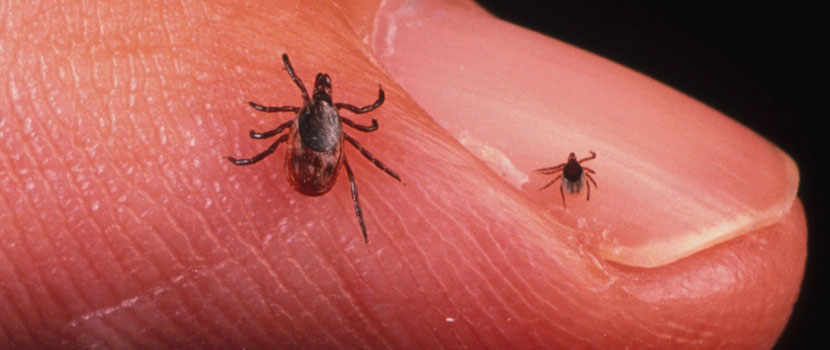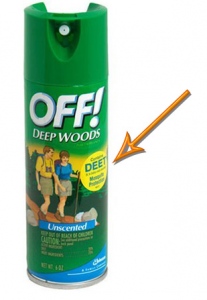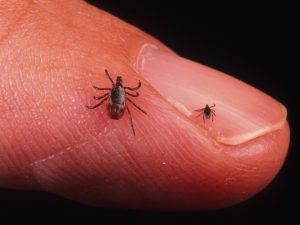

Lyme Disease has garnered a lot of attention recently and for good reason. If left untreated, it could progress to heart problems, arthritis, extreme fatigue and general weakness as well as nervous system disorders.
Lyme literacy is a must especially during the summer months and more so in recent years as Lyme risk areas have increased significantly in Southern Ontario. Have a look at the map and make sure you’re prepared if planning a
visit to any high risk areas (Ontario 2017 Map Lyme Risk Areas).
Prevention (From Public Health Ontario):
Cover up
Your clothing gives you an important layer of protection. Make sure to wear:
- light-coloured clothing so you can spot ticks and remove them before they bite
- a long-sleeved shirt or jacket tucked into long pants
- tuck the pants into your socks for extra protection
- socks and closed footwear
Use insect repellent
Use an insect repellent, or bug spray, containing DEET or Icaridin on clothes and exposed skin. Always read the label for directions on how to use it.
Double-check yourself
When you go to an area where blacklegged ticks live, check – and recheck – yourself by:
- paying close attention to areas such as your scalp, ankles, armpits, groin, naval and behind your ears and knees
- using a mirror to check the back of your body or having someone else check for you
When you’ve double-checked yourself, don’t forget to do the same for children in your care.
Wash and dry
After an outdoor activity, you can:
- put your clothes into a dryer on high heat for at least 60 minutes to kill any possible ticks
- take a shower as soon as you can to wash off a tick that may not be attached through a bite
Check your pets
Talk with your veterinarian about protecting your pets from ticks.
Regularly check pets that spend time outdoors. Ticks may attach to them and be carried indoors, putting you and your family at risk of being bitten.
If you live or work in a woodland area
You can lower chances of contact with – and bites from – blacklegged ticks by:
- keeping grass mowed short
- trimming bushes and tree branches to let in sunlight (ticks avoid hot, dry locations)
- creating a border of gravel or woodchips one metre or wider around your yard if you’re next to a wooded area, or one with tall grasses
- removing leaf litter, brush and weeds at the edge of the lawn and from stone walls and wood piles
- moving children’s swing sets, playground equipment and sandboxes away from wooded areas
- consider placing equipment on a woodchip or mulch foundation
How to remove a tick
Removing a tick is the same for humans and animals. Follow these steps to remove ticks:
- If the tick is attached to you, use fine-tipped tweezers or tick removal tool to grasp the tick as close to your skin as possible. Do not use your fingers.
- Pull the tick straight out, gently but firmly making sure to remove the entire tick (including the head). Don’t squeeze it – avoid crushing the tick’s body.
- After removing the tick, place it in a secure container, such as a screw-top bottle used for medication.
- Give the tick to your health care professional or local health unit.
- Thoroughly clean the bite site with rubbing alcohol and/or soap and water.
How not to remove a tick
Always remove attached ticks with tweezers. Be sure not to:
- burn the tick
- paint the tick with nail polish or petroleum jelly (e.g. Vaseline) to detach it from your skin.
This could cause Lyme bacteria to pass through your skin and into your bloodstream.
Early Symptoms, Diagnosis & Treatment:
Symptoms of Lyme disease usually begin between three days and one month after being bitten by an infected tick. Prompt antibiotic treatment is usually effective. Early symptoms of Lyme disease may include; fever, headache, muscle and joint pain, fatigue and an expanding red rash.
Lyme disease is diagnosed through a combination of symptom presentation, history of exposure to infected ticks and/or validated laboratory test results. The best way to prevent Lyme disease is to avoid tick bites by using insect repellent when outdoors, wearing proper clothing, removing ticks from the body as soon as possible after bites, and removing tick habitats from around the home.
Early Diagnosis is of utmost importance as an immediate course of anti-biotics is necessary to prevent chronic Lyme disease presentation. If you experience any of the early symptoms, see you health care provider and GET TESTED!
 A word on DEET: I Do NOT recommend natural insect repellents as lyme disease is not something you want to be fooling around with. With all due respect to those who live life 100% Natural and 100% Organic, I am in disagreement as life requires a balanced approach. I would not risk my health or my children’s health with Lyme Disease just so I do not suffer the potential small risk of DEET toxin.
A word on DEET: I Do NOT recommend natural insect repellents as lyme disease is not something you want to be fooling around with. With all due respect to those who live life 100% Natural and 100% Organic, I am in disagreement as life requires a balanced approach. I would not risk my health or my children’s health with Lyme Disease just so I do not suffer the potential small risk of DEET toxin.
DEET SAFETY:
–Do not apply over cuts, wounds, or irritated skin.
-Do not apply to hands or near eyes and mouth of young children.
-Do not allow young children to apply this product.
-After returning indoors, wash treated skin with soap and water.
-Do not use under clothing.
-Do not spray in enclosed areas.
Experts recommend that if using DEET, its best to wear long sleeves and long pants, when possible, and apply repellent to clothing rather than skin to reduce exposure. They state DEET based products should only be applied sparingly; saturation does not increase efficiency. DEET repellents should not be inhaled. Repellent-treated clothes should be washed, or kept outside living areas to reduce exposure. Following all these precautions reduces risk, but does not eliminate it.
The right concentration of DEET for:
- adults and children older than 12 years old is up to 30%
- children aged 2 to 12 years is up to 10%
- you can apply the product up to 3 times daily
- children aged 6 months to 2 years old is up to 10%
- you should not apply the product more than once a day
For children younger than 12 years old, do not use a DEET product on a daily basis for more than a month.For infants younger than 6 months old, do not use an insect repellent containing DEET. Instead, use a mosquito net when babies are outdoors in a crib or stroller.
Have a great Summer!
Dr. Negin, ND


